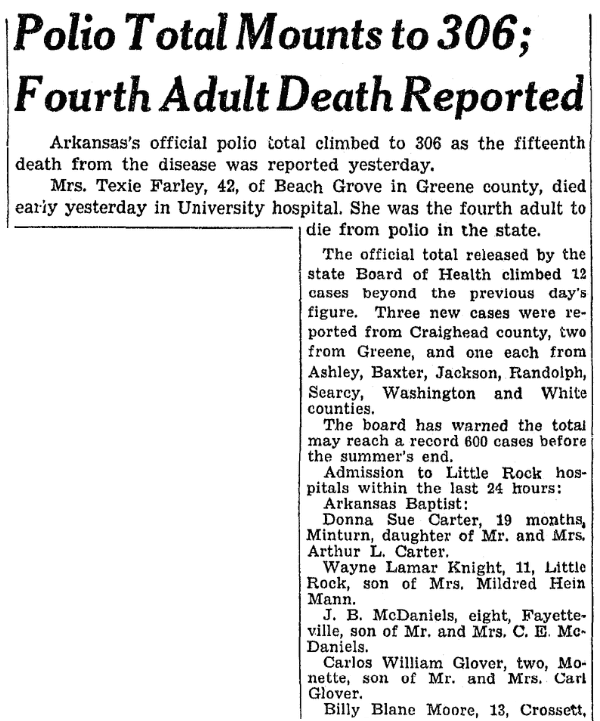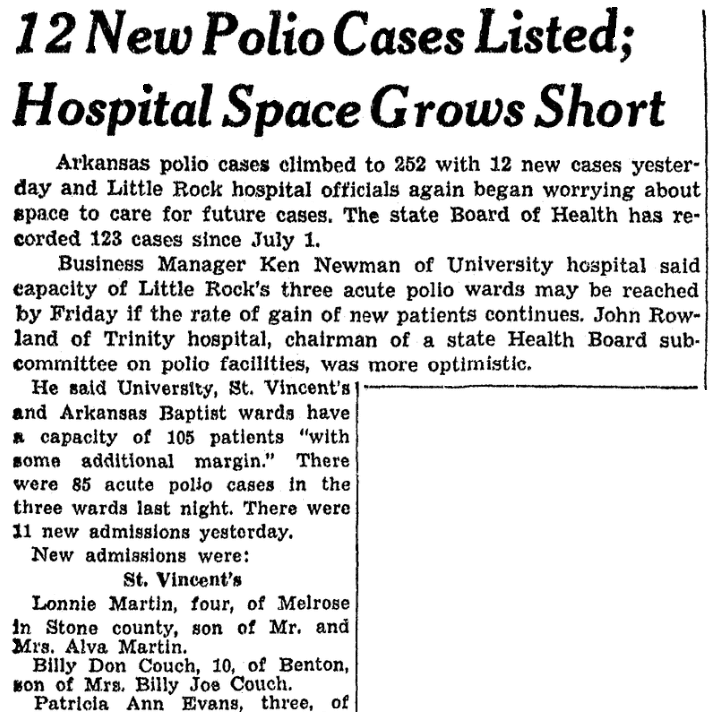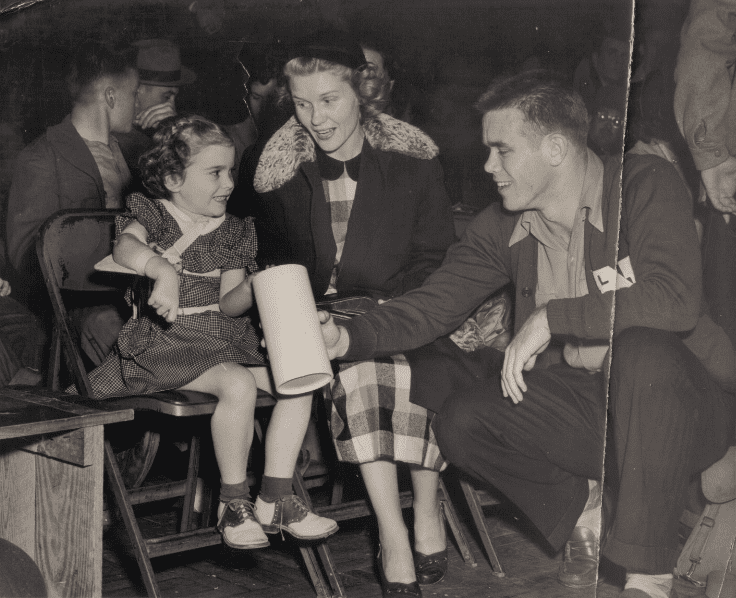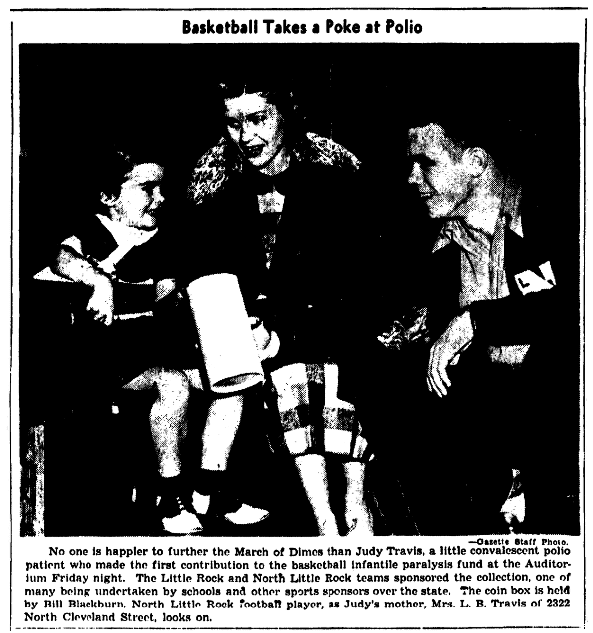Introduction: In this article, with the whole world fighting COVID-19, Jane Hampton Cook compares this pandemic to the fight against polio 70 years ago – a disease that afflicted her mother. Jane, the former White House webmaster for President George W. Bush, is a presidential historian and the author of nine historical books. She is a consultant for the Women’s Suffrage Centennial Commission. Her works can be found at janecook.com.
How does our response to the COVID-19 pandemic compare to past epidemics? I looked back at another epidemic, one that infected my mother when she was four years old and affected her every day for the rest of her life. Articles from old newspapers showed me several similarities – and a key difference – between the polio epidemic of the late 1940s and today’s pandemic.
Because my mother grew up in Little Rock, I focused on Arkansas newspapers – using the collection I found in GenealogyBank’s Historical Newspaper Archives – from the summer of 1949, the year she was infected. Sure enough, newspapers were reporting on the polio epidemic.
“One of man’s tiniest but toughest foes – the polio bug is kicking up his summertime antics once more,” the Arkansas Gazette reported on 17 July 1949. The article noted that these tiny viruses were so “small that 25 million could fit on a pinhead.”

Like today, the news back then focused on hotspots. In the summer of 1949, Texas was leading the nation in polio cases: “Texas has had 800 cases this year.” Oklahoma was second and Arkansas third.

One of the recent concerns in the top hotspot of New York has been making sure there are enough hospital beds for COVID-19 patients. The same was true in 1949. Fearing they would reach capacity, hospital administrators made alternative plans.

Just as hospitals have been worried about ventilators today, this article reported that they were also worried that “necessary equipment has not been installed to care for patients” during the polio outbreak.
A difference between 1949 and 2020 is privacy. Today newspapers take greater care in protecting people’s privacy. Back then newspapers listed the names and ages of the new hospital patients, including children, such as “Lonnie Martin, four” and “Patricia Ann Evans, three.”
My mother, who was four at the time, was not listed in newspapers that summer because she was not hospitalized. One morning in August 1949, she could not reach for her orange juice at the breakfast table. After a visit to the pediatrician through a backdoor entrance, my mother was diagnosed with polio and quarantined at home. She permanently lost the use of her right shoulder.
The biggest difference between today’s pandemic and the polio epidemic is the scale of the shut-down. While our entire nation is shut down today, back then shut-downs were targeted. Drug stores closed their soda fountains. Swimming pools closed. The start of school was postponed. Polio was contagious but it was an epidemic, not a global pandemic.
One of our family treasures is a photograph of my mom at a polio fundraiser.

It was published in a newspaper – however, we didn’t know the newspaper’s name or the date. A quick search in GenealogyBank on the keywords polio, my mother’s last name, and a date range of 1950-52 brought me to this headline: “Basketball Takes a Poke at Polio.” I teared up when I saw the photo and caption of my mother, Judy Travis, at a March of Dimes basketball fundraiser on 28 January 1951.

The photo caption noted:
“No one is happier to further the March of Dimes than Judy Travis, a little convalescent polio patient who made the first contribution to the basketball infantile paralysis fund at the Auditorium Friday night.”
Back then people gave their loose change to the March of Dimes and donated wool blankets and waterproof materials, such as raincoats, to the Red Cross to make hot packs for polio patients at hospitals.
Today people are sewing masks, donating food, and making other contributions. As awful as epidemics and pandemics are, our charitable response shows that the best of humanity comes out to fight the worst in nature.
Related Article:
